Outforia Quicktake: Key Takeaways
- Contrary to popular belief, wolves do not howl at the moon. They are nocturnal creatures and raise their snouts to howl which gives this impression.
- Wolves howl for various reasons including returning to their pack, rallying for a hunt, social bonding, warding off rival wolves, and finding a mate. The howling can be heard up to 7 miles (11 kilometers) away.
- Wolves have four distinct vocalizations: howl, bark, whimper, and growl. Each of these is used for different types of communication within the pack and territory.
- Though wolves are usually active at night, they are neither nocturnal nor diurnal. They are most active at dawn and dusk, making them crepuscular.
- Wolves’ howling patterns change with the seasons, particularly during the breeding season, traveling periods, and denning season.
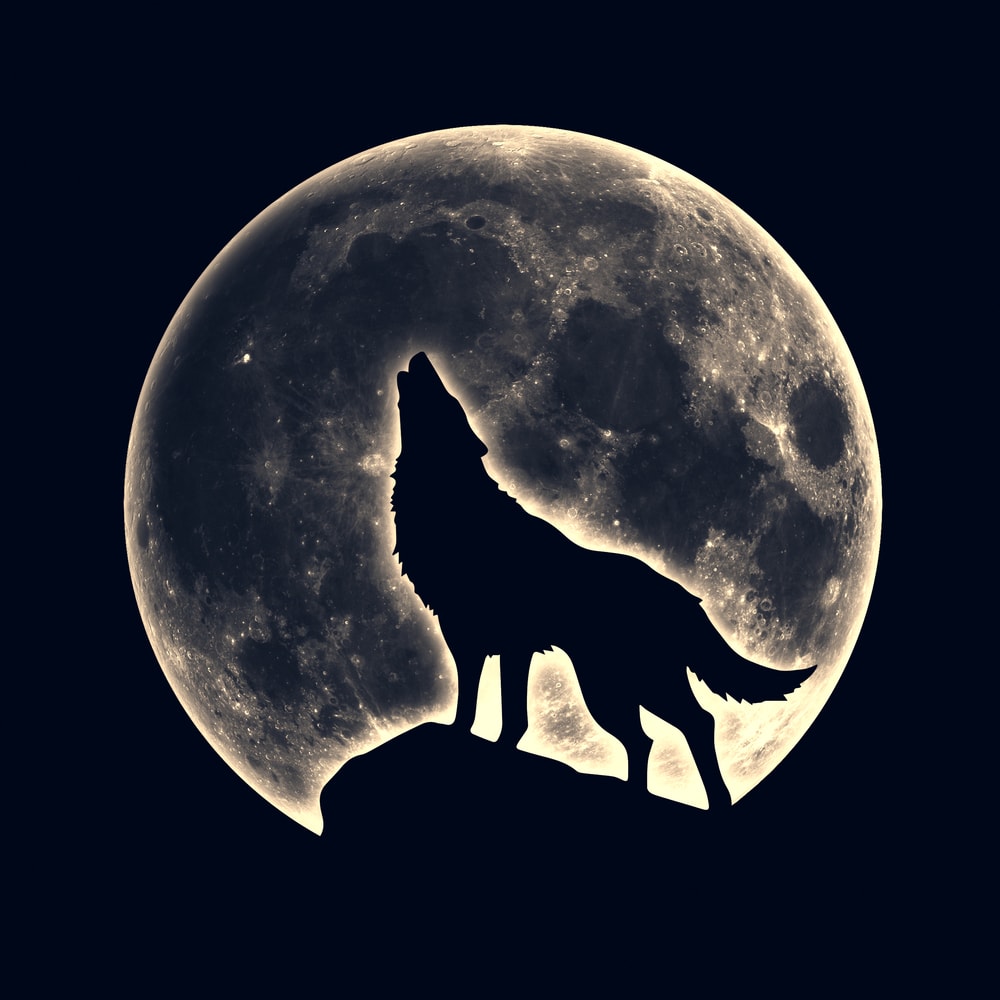
Why do wolves howl at the moon? Wolves are complex, social creatures. There can be many reasons for a wolf to howl.
However, wolves don’t howl at the moon. That’s just a folk legend. It only looks like they do, as they are nocturnal and raise their snouts when they howl. So, the real question is: why do wolves howl?
Read on to find out more.
Why Do Wolves Howl?

Wolves howl for many reasons. They howl to:
- They find their way back to their pack when they are lost. They have a special shortened howl for this.
- Rally the pack together for a hunt.
- For social connection between wolves. Wolves will howl at other members of their pack as a form of greeting.
Scientists tested the cortisol levels (a stress hormone) of wolves in the same pack. They discovered it wasn’t anxiety that was making these wolves howl at each other. It was likely that these wolves were using howling as a term of affection. Isn’t that sweet? - To ward off rival wolf packs. This type of howl is different. It’s fiercer and not so friendly.
Wolves can have a territorial range of 3,000km (1,200 square miles), so wolves need to howl to get the message across such a large area. A wolf’s howl can be heard by another wolf seven miles away. - To find a mate. Lone wolves will howl to find a mate and start their own pack.
You May Also Like: The Wolves In Yellowstone: A Classic Conservation Story
Do Wolves Bark?
Wolves actually have four distinct vocalizations. A vocalization is a sound an animal makes to communicate. That includes us humans.
Wolves can:
- Howl
- Bark
- Whimper
- Growl
Barking is a warning call. Mother wolves will bark at their pups if there is danger around. Wolves will bark if they sense a threat from another pack or from human activity.
These sounds aren’t exclusive. They can be combined. So a wolf can make a bark-howl to ward off another wolf pack encroaching on their territory. There are many more combinations a wolf is capable of. It’s almost like a protolanguage.
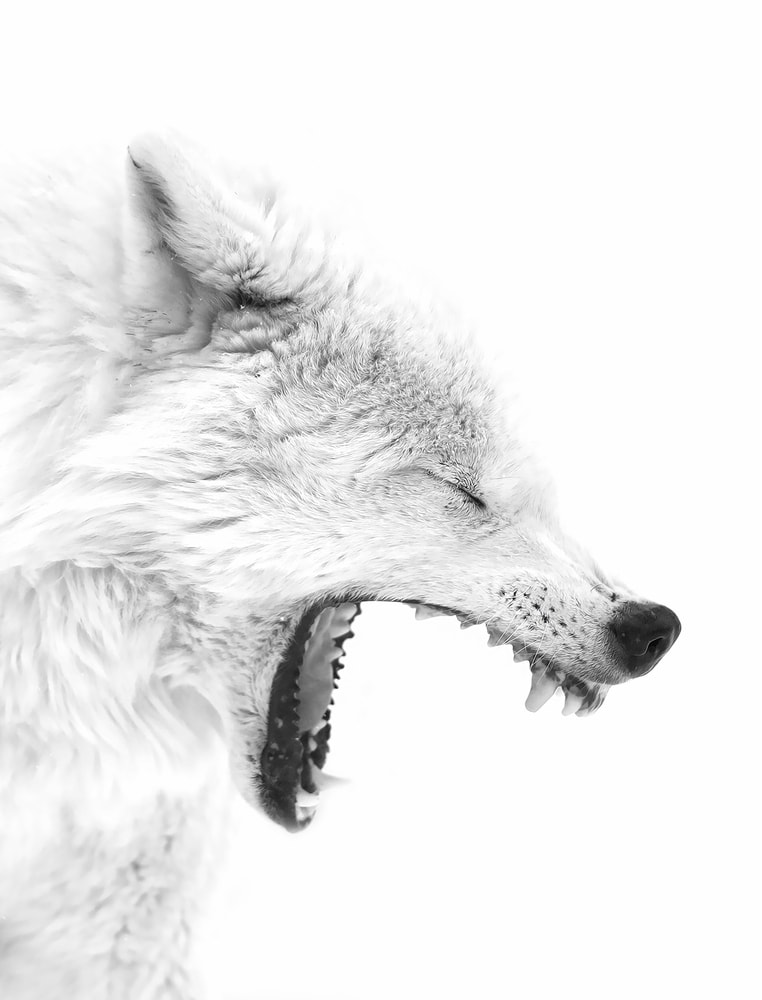
Whimpering is a sign of submission in an adult wolf. Young pups whimper to tell their parents they need food. Or something else.
Wolves don’t just use vocalizations to show something like submission. They will also use lots of body language. They’ll use active submission gestures like licking the chin of the dominant wolf and crouching low. They’ll also use passive body language and roll over, letting the dominant wolf inspect their genitals.
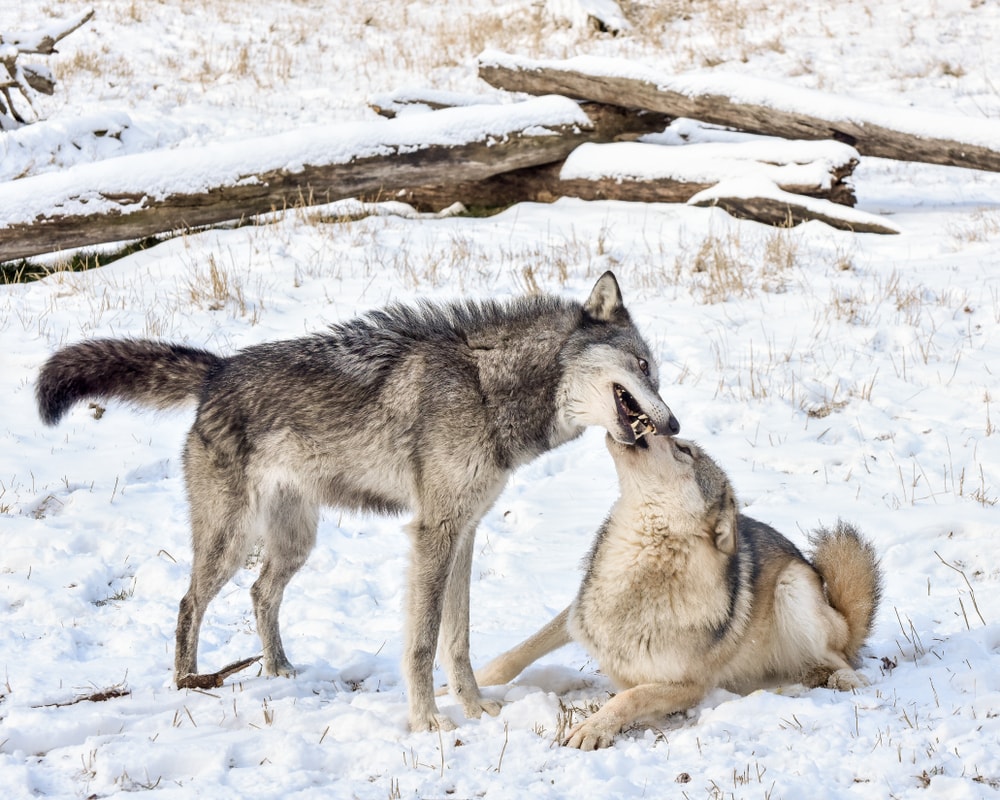
Growling is used by wolves as a warning. A dominant wolf will growl at a submissive member of the pack to assert authority. If a wolf feels threatened by something or someone coming too close, they will growl.
Some later studies have found that there are 11 distinct wolf calls if you add together all the combinations of these. There’s the howl, bark, yelp, whine, whine-moan, woof, snarl, and growl-moan. To name a few.
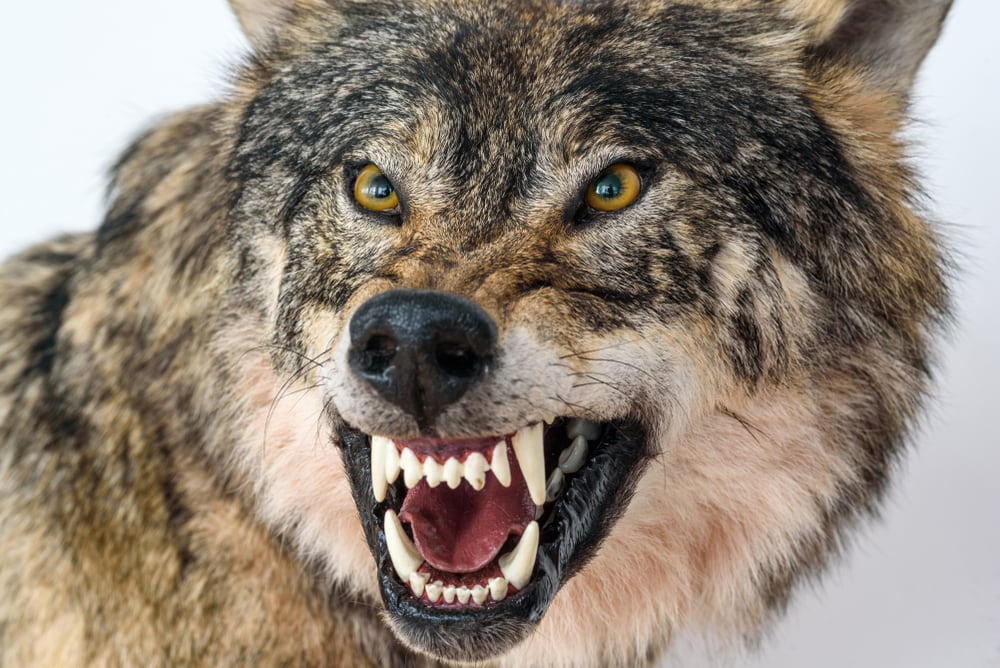
Are Wolves Nocturnal?
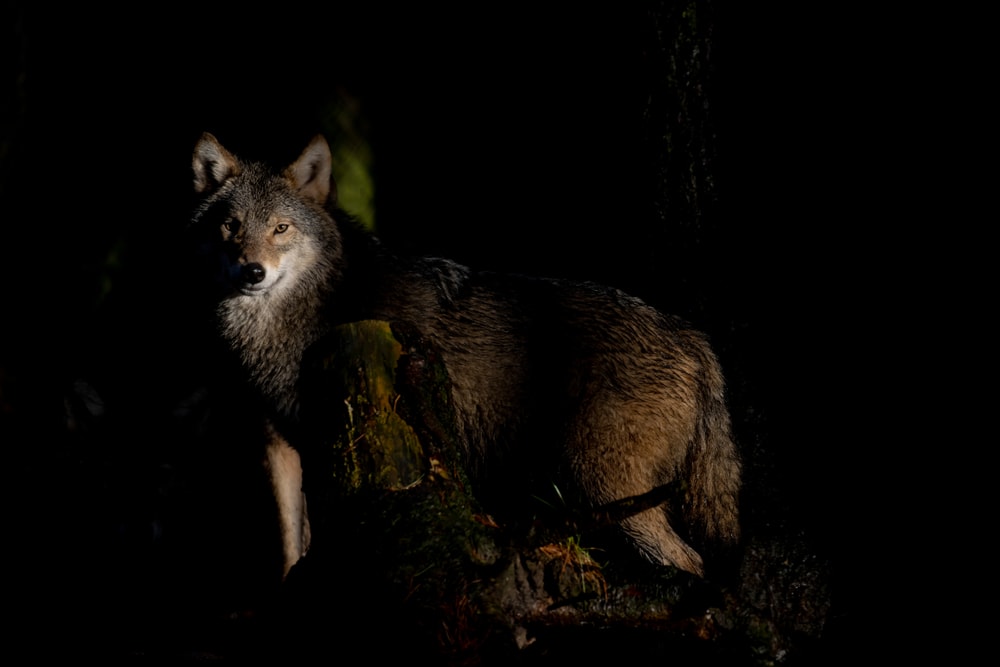
Wolves are usually most active at night. This means they are classified as nocturnal.
However, some sources, like The Wolf Conservation Center in New York, say wolves are neither nocturnal nor diurnal, as they are most active at dawn and dusk. So this would make them crepuscular.
Wolves have a special layer of cells behind their retinas. This is called the tapetum lucidum. It’s this that makes their eyes shine when torches are shined on their faces in the dark. This helps wolves see in the dark. They also have lots of rod and cone cells in their eyes to help them see in the dark.
Are There Seasons In The Year When Wolves Will Howl?
Wolves do howl all year, but there are times in the year when they’re likely to howl more. Here are some of the reasons:
Breeding Season
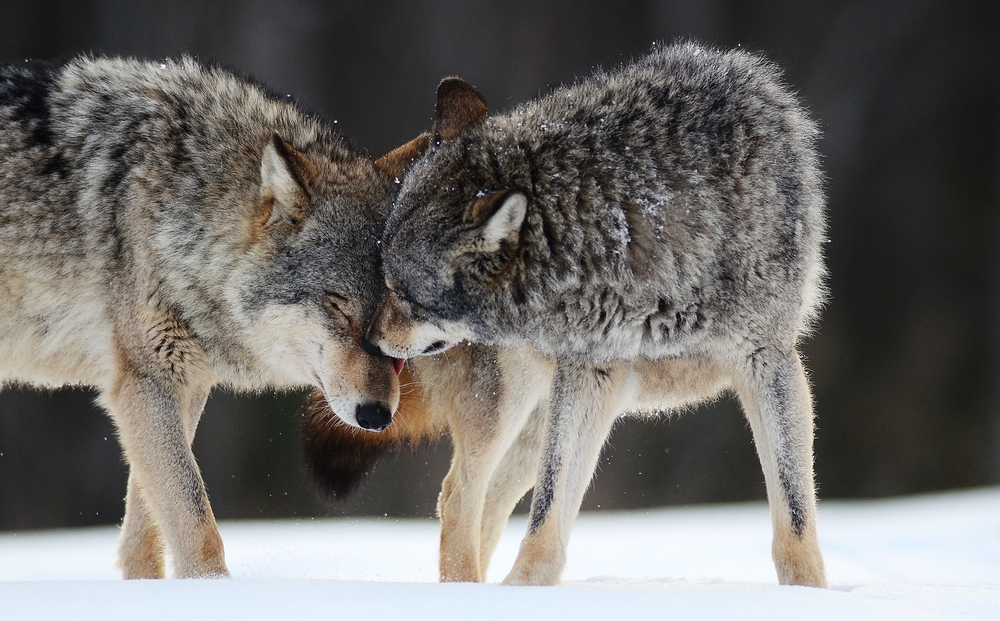
Researchers studying wolves in Yellowstone National Park heard four times more wolf howls in February than in May.
Rick MacIntyre of the Yellowstone Wolf Project assembled this conclusion using data he gathered over a ten-year period. This encompassed over 11,000 howls.
The conclusion was that the breeding season and reproduction influence when wolves howl. This time of year coincides with when wolves have hormonal changes in testosterone and estradiol.
Traveling
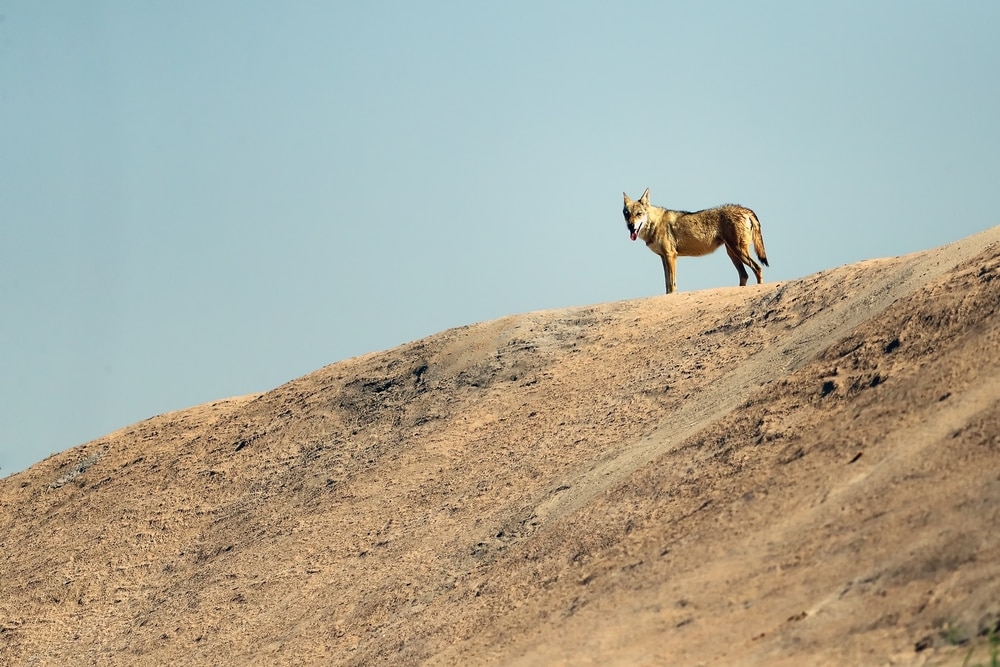
During the winter months from October to February, foreign wolves that are traveling howl more than members of packs. This is the winter season when wolves travel more and fight over territory.
Denning Season
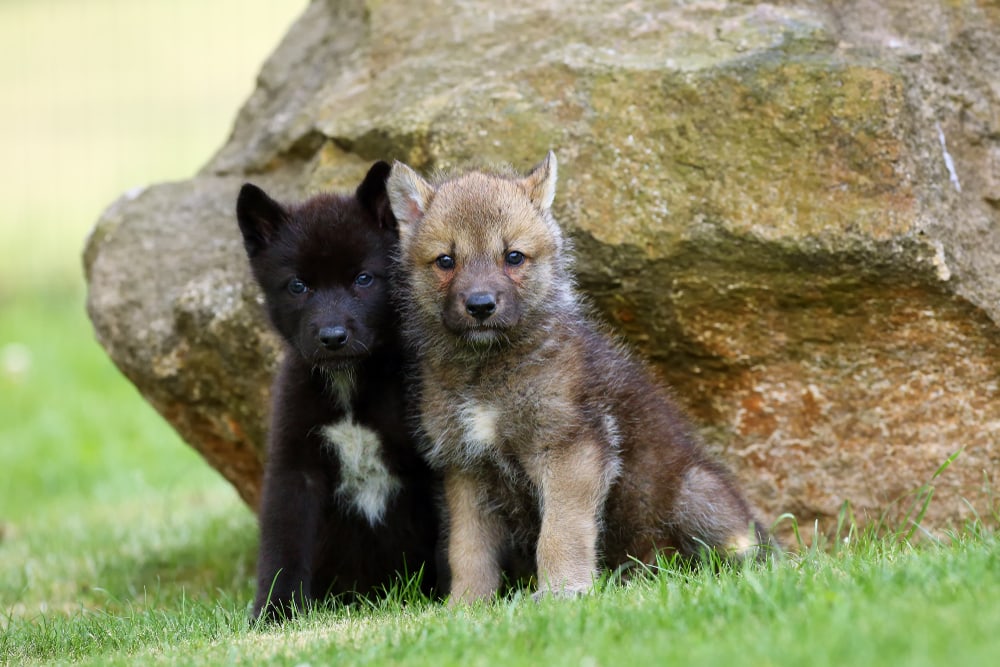
After the end of the breeding season in February, it’s no longer the traveling foreign wolves that howl the most. Now it is the members of packs that are howling at each other. This is because now wolves are focusing on bringing up pups.
Do Wolves Have Different Types Of Howls?
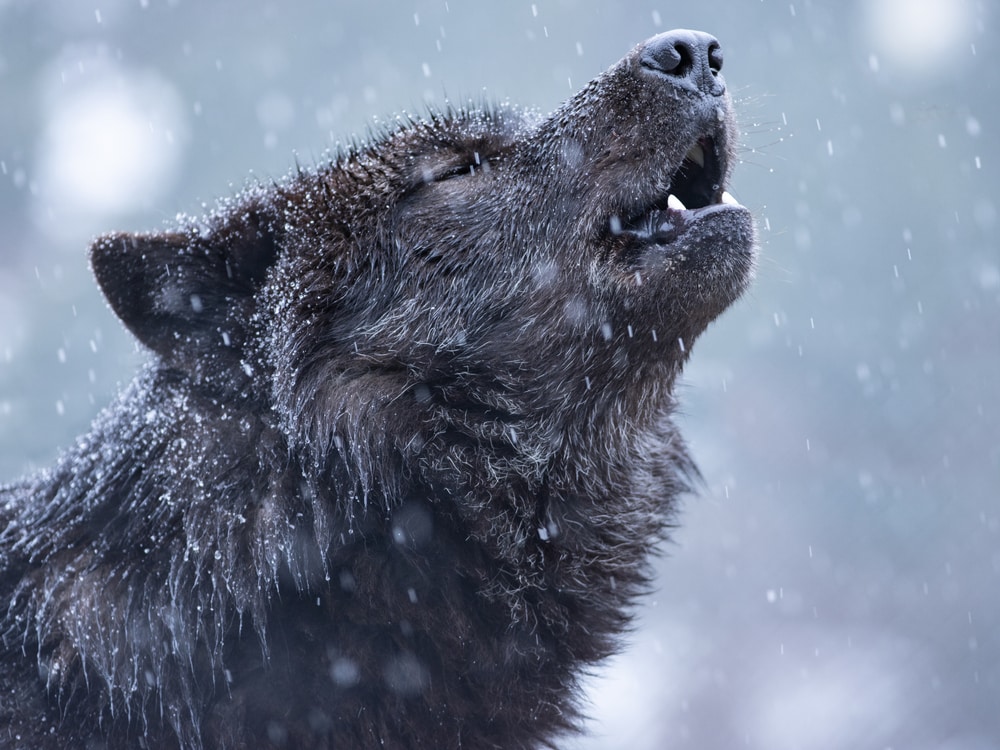
Wolves do have different types of howls depending on what they are intending to do. Dominant wolves (the Alpha male and female) have a lower-pitched howl than the more subordinate wolves.
Higher-pitched howls can also indicate excitement. Researchers from the US National Park Service studied a beta male called “302.”
He once got the whole pack to follow him by howling in a pattern of short howls going up and down in tone. It’s thought that he was so excited that the pack stopped ignoring him and began to get interested.
Not only that, but wolves can distinguish between howls to identify individual wolves that are in their pack. They are able to hear minute harmonic differences in each other’s howls. So every wolf’s howl is unique to them, even if we as humans can’t tell them apart.
You May Also Like: Idaho Wolves: The Challenges And Triumphs Of Wildlife Conservation
Other Forms of Wolf Communication
It’s not all about the howling. Or even all about the noise. Wolves can communicate in several ways. They use a combination of these to get their message across to other wolves.
Scent and pheromones
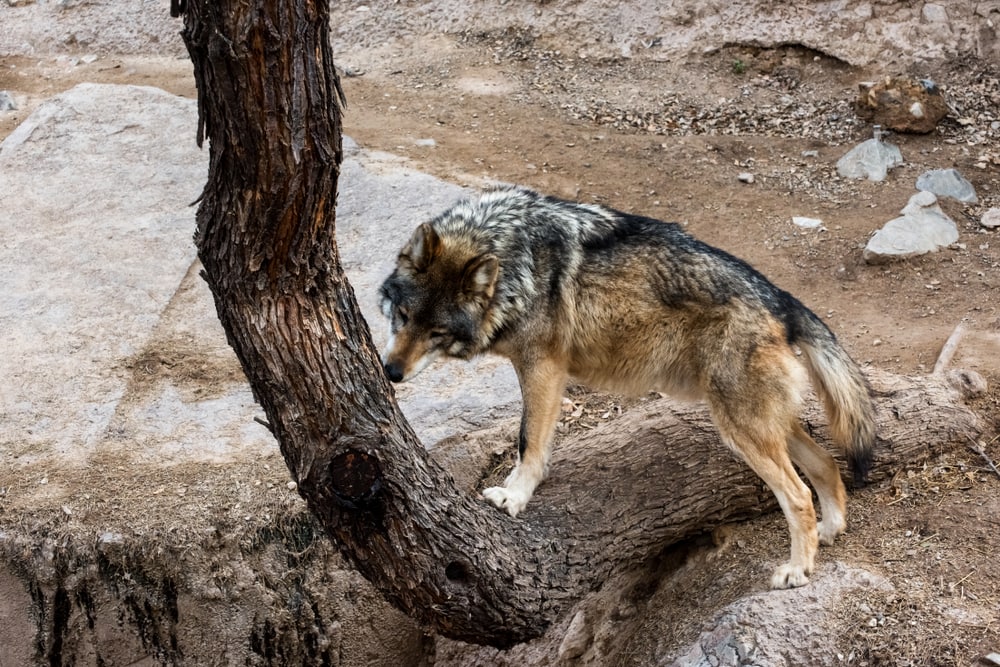
Scent is the strongest sense in a wolf. They have excellent noses. Wolves use scent to mark their territory as well as signal their readiness to mate. Within the scent are pheromones.
Pheromones are chemicals the body produces for the purpose of communication.
They do this with special glands on either side of their tail. They also have scent glands near their toes, skin, eyes, and genitals. Wolves can even use scent to mark out food caches that are empty. They are telling other wolves in their pack that the food there is gone.
Body language
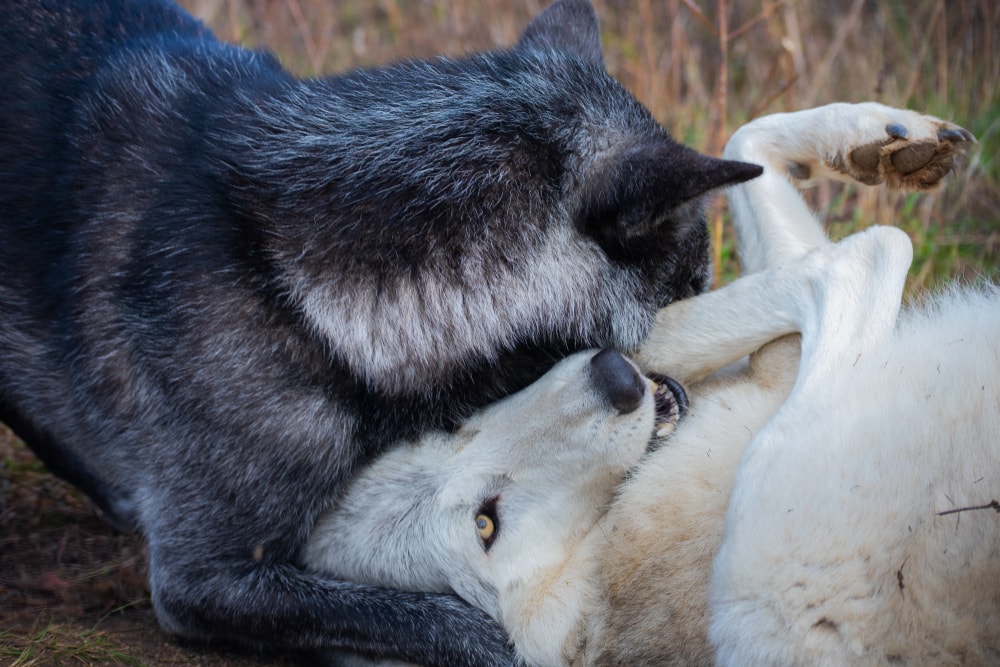
Body language is also really important in wolf society. Wolves use this body language to communicate:
- ears,
- facial expressions,
- body position, and
- tails
Laid-back ears indicate aggression. Ears pricked forward mean the wolf is friendly and interested.
A snarling wolf’s face looks terrifying to humans, but this is a common expression the dominant wolf uses to settle an argument in their favor.
A wolf that wants to play will bounce up and down and bow down with their front legs. Just like a pet dog does. A wolf that is asserting dominance has its hackles raised, stands tall, and has a raised tail. The submissive wolf will crouch and lick the muzzle of the dominant wolf.
Where Can I Find Howling Wolves?
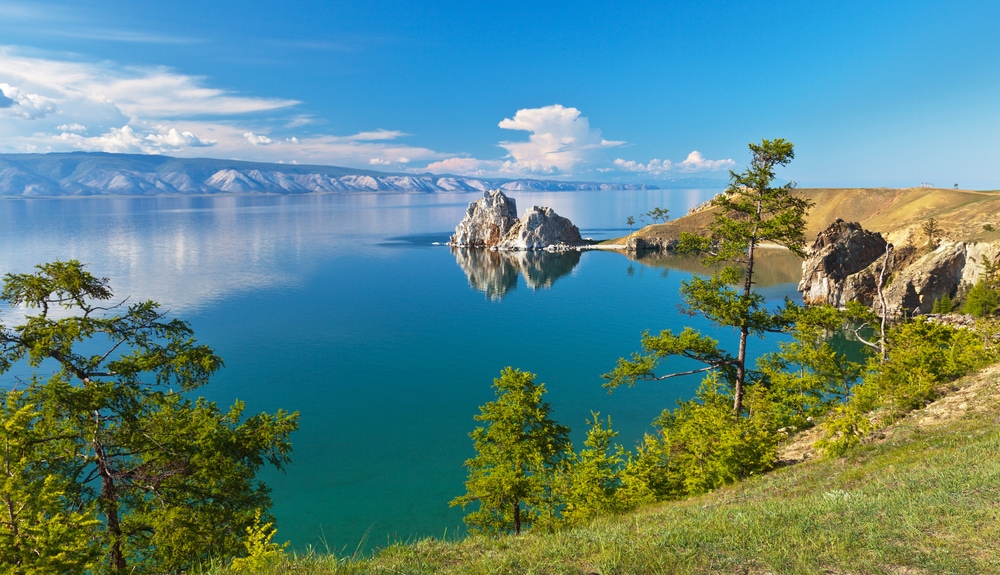
Here’s a handy list of great places to hear wolves howling and find out for yourself whether wolves really do have their own language.
- Yellowstone National Park, US: As of 2023, there are about 103 wolves in Yellowstone National Park. The Northern Range of the park is the best place to find them.
Wolves live all over the park (and outside of it). Dawn and dusk are the best times to spot them and hear them howl. - Bale Mountains National Park, Ethiopia: this park is home to the rare Ethiopian wolf. It’s part of the Ethiopian highlands and encompasses grasslands, woodlands, meadows, and forests.
- Lake Baikal, Siberia, Russia—the forests around the species-rich Lake Baikal are full of wolves. Plus bears.
- Peninsula Region, India: There are between 4,000 and 6,000 wolves in India’s P Peninsular Region. The Himalayas are another good place to look, with 400 to 1,200 wolves living in the mountains.
Below is the beautiful Lake Baikal in Russia, a good place to hear wolves howling.
How the Moon Affects Wolf Behavior
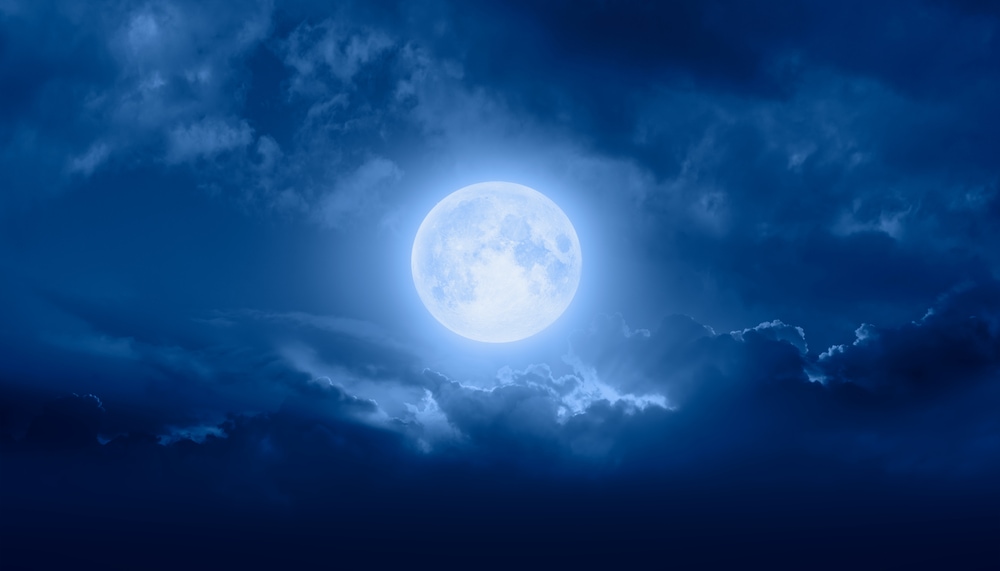
While wolves don’t howl at the moon, it does have an indirect effect on their behavior. We know that they don’t turn into werewolves.
Researchers studying maned wolves found that they reduced their time spent hunting and traveling during the full moon. This is likely to be a response to the decreased number of prey during a full moon. As there is more light, this makes it easier for prey to see predators.
This causes prey animals to hide during full moon times, encouraging the wolves to leave hunting until a more fruitful time.
The maned wolves, which were fitted with GPS tracking collars, were studied over five lunar cycles. It was found that they traveled on average 1.88 km (1.16 miles) less on a full moon than on a new moon. This could also be because they didn’t have to travel so far to find food.
You May Also Like: How Big Are Wolves? Meet The World’s Largest Canine
Fun Facts

- A wolf can live 13 years in the wild and 16 years in captivity.
- Wolves often mate for life (unless one of them dies).
- A wolf can sprint at up to 38 mph (61 km/h) for short distances.
- Wolves have 42 teeth.
- A wolf’s sense of smell is 100 times better than a human’s.
- A wolf bows and prances when it wants to play. A dog does this too.
- Gray wolves have a bite strength of 400–1200 lbs (181–544 kg) per square inch (2.5cm). That’s a really hard bite.
FAQs
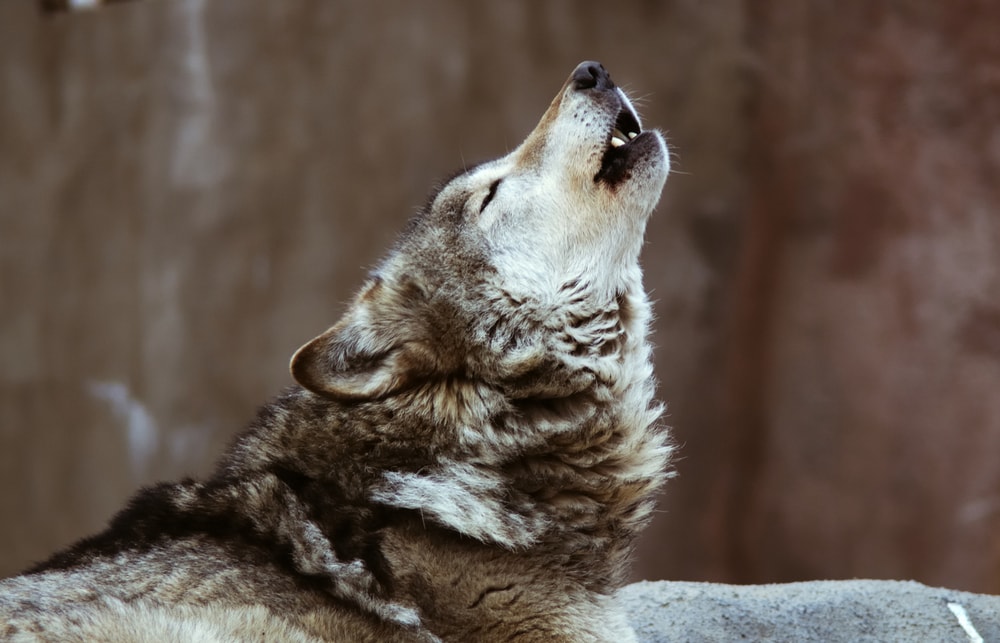
Do lone wolves howl?
Lone wolves will howl to attract a mate or to locate their pack if they have been accidentally separated. A young wolf may strike out on its own from its birth pack.
When this happens, it has a chance of becoming an alpha male or female if it can find a partner of the opposite sex and some territory.
How far away can a wolf howl be heard?
A wolf that is about 7 miles (11 km) away can hear another wolf howl. That’s why it’s worth wolves raising their heads. It helps the sound travel further. It’s not that they are howling at the moon.
Which wolves in the pack do the most howling?
Alpha wolves will howl more frequently. This makes sense, as they would be organizing the hunting and activities. They also have a lower-pitched howl.
What is the Wolf Moon?
The Wolf Moon is the traditional name of the full moon in January. It is likely to come from Native American folklore. This was thought to be the time when the wolves were most active. This does have a basis in fact, as this is the middle of the wolf breeding season.
What was the largest wolf ever discovered?
The largest wolf was a male wolf shot in Bulgaria in 2007. He weighed 176.4 pounds (80 kg).








